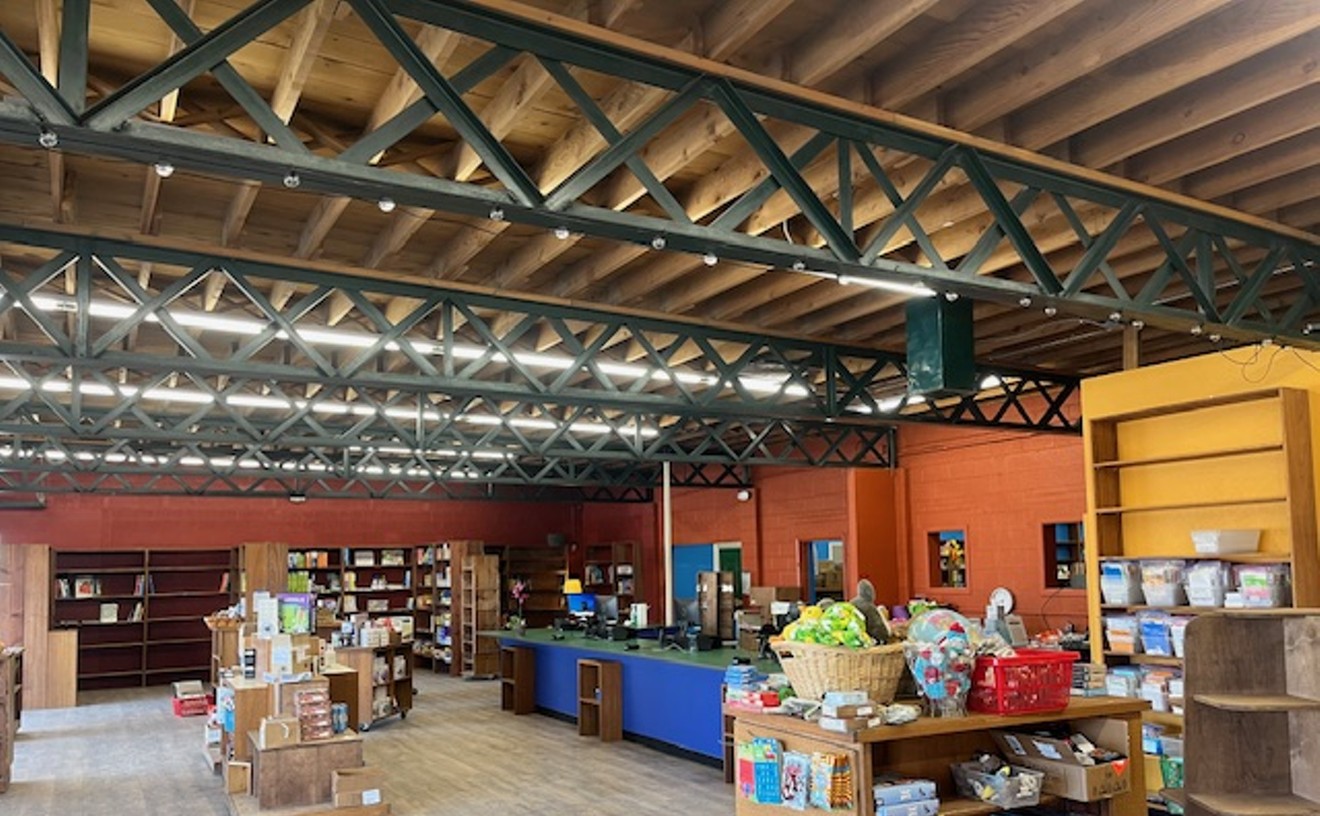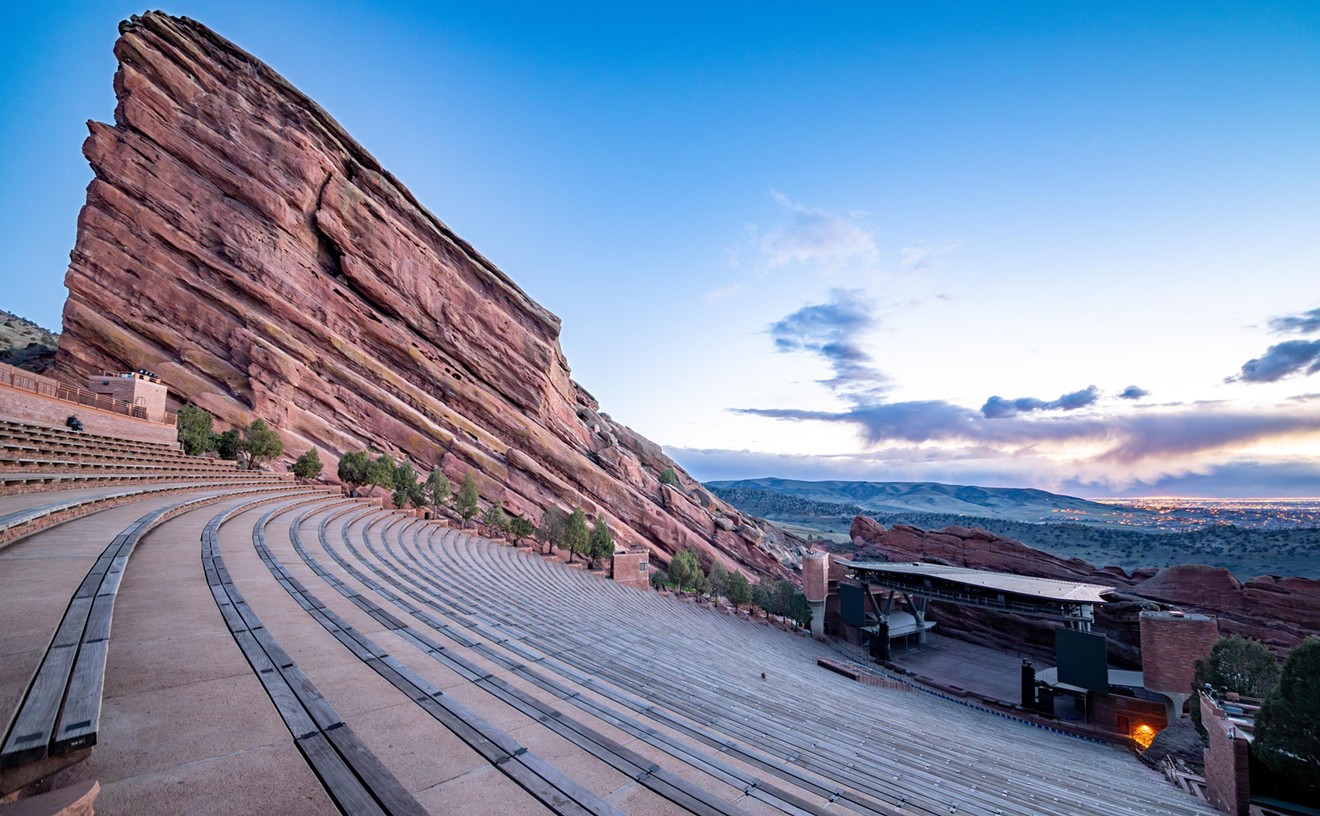This country is the offbeat, off-roads territory of The Real West: A Contemporary Photographic Overview, at Metro State's Center for the Visual Arts. A diverse selection from thirteen Colorado photographers, Real West does include some gorgeous vistas and blue Cibachrome skies (James O. Milmoe's close-up photos of aspen groves and Howard Rosenfeld's formal studies of rock and sky are particularly notable). But most of the exhibition is devoted to works that defy such conventions and instead reveal elements of a grittier West than we're used to seeing in photographs--filled with trash, trailers and mine-tailing dumps. Some shots zoom in on the dull conformity and unglamorous lifestyles of real Westerners; others use primitive cameras and photo-art to novel effect. But overall, the independent-minded artists represented here aim to give a truer picture of the place in which they live and work.
The West becomes quite a different subject when portrayed in black-and-white, and several of these photographers nearly transform it into an alternative universe. William S. Sutton's works initially appear as straightforward as government-survey snapshots. Closer inspection, however, reveals a peculiar, alien world of odd geological formations and uncanny natural forms. Sutton's "Sand Hills, Samuel McKelvey National Forest, NE" shows a series of eerily lifelike rolling hills that resemble a school of salmon trying to leap upstream. His "Organ Pipe National Monument, Arizona" focuses on another herd--this time, of strange cacti that swarm over the desert landscape like migrating wildebeests.
Steven Hays presents a slightly more somber view of alien landscape subjects: His gray-shrouded and eroded rock towers, slightly out of focus because of the enormous scale, seem as remote as Mars and nearly as cold. David Sharpe creates even more psychological distance by using a handmade pinhole camera to capture his images. Blown up large, the crude landscapes become blurry and ambiguous, as unknowable as the land itself. "Near Blue Mesa," which shows a stand of stripped trees on a drought-plagued reservoir beach, and "Towers," picturing a similar grove of factory smokestacks, neatly pinpoint the isolation of the West. And Myron Wood's black-and-white photographs of ranch workers and wildlife circa 1949-1968 provide a stark but mesmerizing glimpse into another era.
When color is used here, it is often manipulated to intensify a mood rather than add aesthetic appeal. Scott Engel's "Mt. Garfield Near Palisade, Mesa County, Colorado" and "Little Wild Horse Canyon, San Rafael, Utah" seem as bleached and faded as the sun country they portray. Eric Paddock's works also capture the washed-out, dusty hues of abandoned Western outposts; the sad trailers and power-line poles of "Model, Colorado" and the rickety One-Stop of "Delhi, Colorado" offer mute testimony to the bust afflicting so many towns on the far plains and deserts. Ron Wohlauer starts with black-and-white photos, then hand-paints them: His "Fremont Pass" looks a lot like a tourist souvenir from the Forties, but the pristine peaks it celebrates are surrounded on all sides by slag heaps, access roads and more power lines.
Topping off this critical view of the West is an installation by Jack Balas that uses pieces of construction trash to frame small, scenic snapshots, effectively miniaturizing the land in a sea of refuse. It's a bleak commentary, and a telling one.
The Real West: A Contemporary Photographic Overview, through February 25 at the Metro State Center for the Visual Arts, 1701 Wazee Street, 294-5207.










